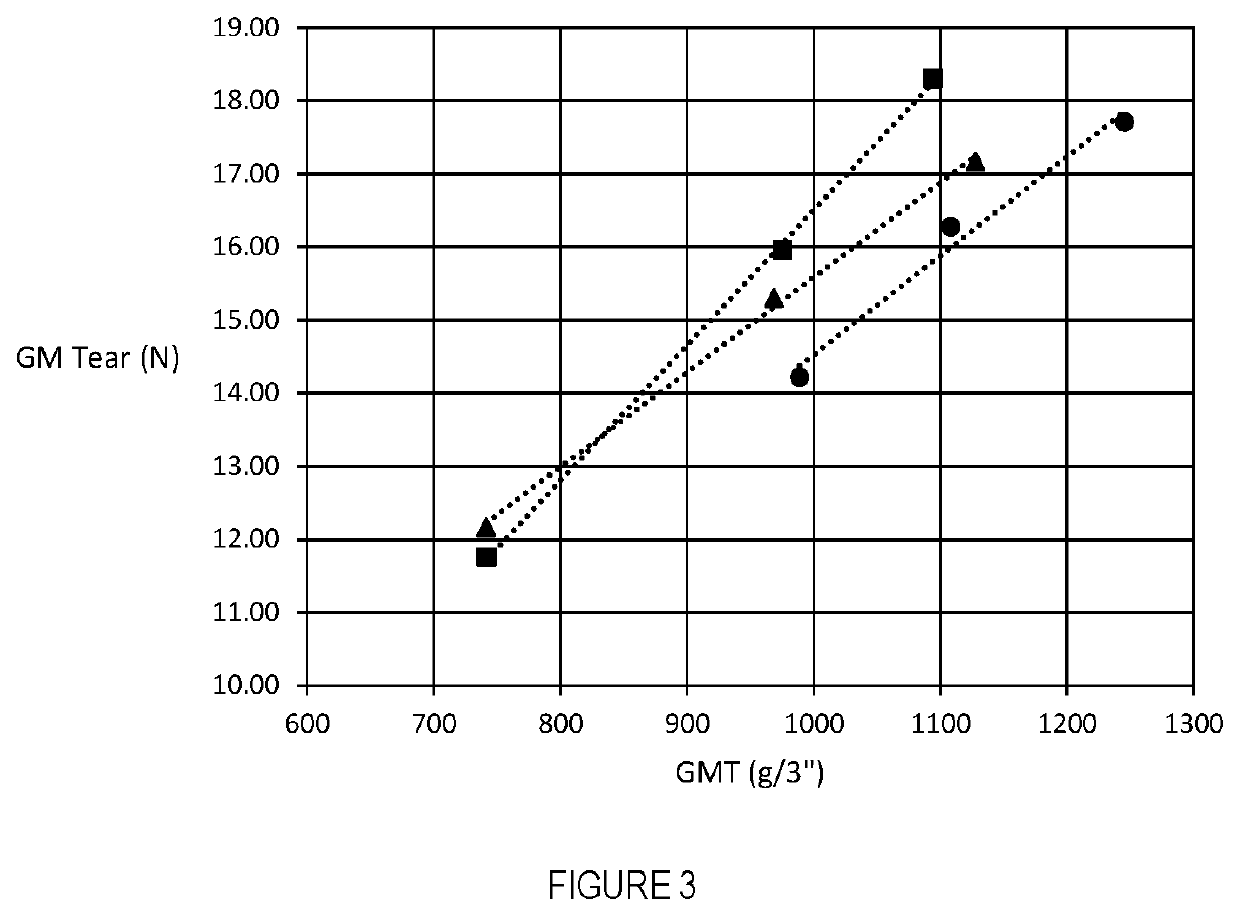Layered tissue comprising non-wood fibers
a non-wood fiber, layered technology, applied in the field of tissue paper makers, can solve the problems of unsuitable soft tissue products, unsuitable for tissue products, and large economic and environmental pressure on the supply of nswk, and achieve the effect of improving the properties of tissue products, affecting important tissue properties such as strength and stiffness
- Summary
- Abstract
- Description
- Claims
- Application Information
AI Technical Summary
Benefits of technology
Problems solved by technology
Method used
Image
Examples
examples
[0070]Base sheets were made using a through-air dried papermaking process commonly referred to as “uncreped through-air dried” (“UCTAD”) and generally described in U.S. Pat. No. 5,607,551, the contents of which are incorporated herein in a manner consistent with the present invention. Initially, northern softwood kraft (NSWK) pulp was dispersed in a pulper for 30 minutes at 4 percent consistency at about 100° F. The NSWK pulp was then transferred to a dump chest and subsequently diluted to approximately 3 percent consistency. The NSWK pulp was refined at about 1 HP-days / MT as set forth in Table 2, below. The softwood fibers were added to the middle side layer in the 3-layer tissue structure. The virgin NSWK fiber content contributed approximately 40 percent of the final sheet weight.
[0071]Eucalyptus hardwood kraft (EHWK) pulp was dispersed in a pulper for 30 minutes at about 4 percent consistency at about 100° F. The EHWK pulp was then transferred to a dump chest and subsequently di...
PUM
| Property | Measurement | Unit |
|---|---|---|
| length | aaaaa | aaaaa |
| length | aaaaa | aaaaa |
| length | aaaaa | aaaaa |
Abstract
Description
Claims
Application Information
 Login to View More
Login to View More - R&D
- Intellectual Property
- Life Sciences
- Materials
- Tech Scout
- Unparalleled Data Quality
- Higher Quality Content
- 60% Fewer Hallucinations
Browse by: Latest US Patents, China's latest patents, Technical Efficacy Thesaurus, Application Domain, Technology Topic, Popular Technical Reports.
© 2025 PatSnap. All rights reserved.Legal|Privacy policy|Modern Slavery Act Transparency Statement|Sitemap|About US| Contact US: help@patsnap.com


